This list of NZ edible flowers introduces 16 flowers that you can eat, that are grown from seed.
What delight flowers bring to our world.
They bring joy on so many levels –
Beauty, Food for bees, butterflies and birds, Medicine, Creative inspiration, Thoughfulness.
And some are even edible.
Yes, you can eat flowers. Some flowers.
Many have medicinal and nutritional properties.
Many have ancient folklore and myths that hint at deeper reverence.
If you’re lucky enough to have a rainbow of colourful flowers in your garden, you might be surprised to learn that some may not only be a treat for the eyes.
Growing NZ edible flowers
I like to grow edible flowers from seed to be sure I have selected these flowers by their botanical name.
It is important to note that not all varieties are edible.
Growing from seed also allows me to grow my flowers free of chemicals and pesticides, in home made compost – just as I do for my veges.
Many flowers and shop bought seedlings are grown for ornamental purposes . . . but if you plan to eat it, organic is preferable!
Safety notes!
- It is important to be 100% CERTAIN what you are picking. If you don’t know, don’t eat it!
- Some varieties of flowers share the same common name but are not edible.
- ALWAYS CHECK THE BOTANICAL NAME name when purchasing plants or seed.
I hope you find some inspiration amongst this list of edible flowers from the cottage garden, that have readily accessible seeds to plant, grow, bake with and make with.
List of NZ edible flowers

BERGAMOT (BEE BALM) EDIBLE FLOWERS –
Eye-catching bright coloured blooms range in colour from scarlet to pink to lavender. Loved by the bees, hence it is also known as Bee Balm. Used as a herb bergamot contains antibiotic and antiseptic compounds which can be infused as a tea to soothe sore throats and ease cold symptoms. The sweet spicey flowers can be used in pasta and rice dishes, salads, stuffings and jams.
+ PARTS TO USE -Flower heads and petals.
+ BOTANICAL NAME – Monarda fistulosa
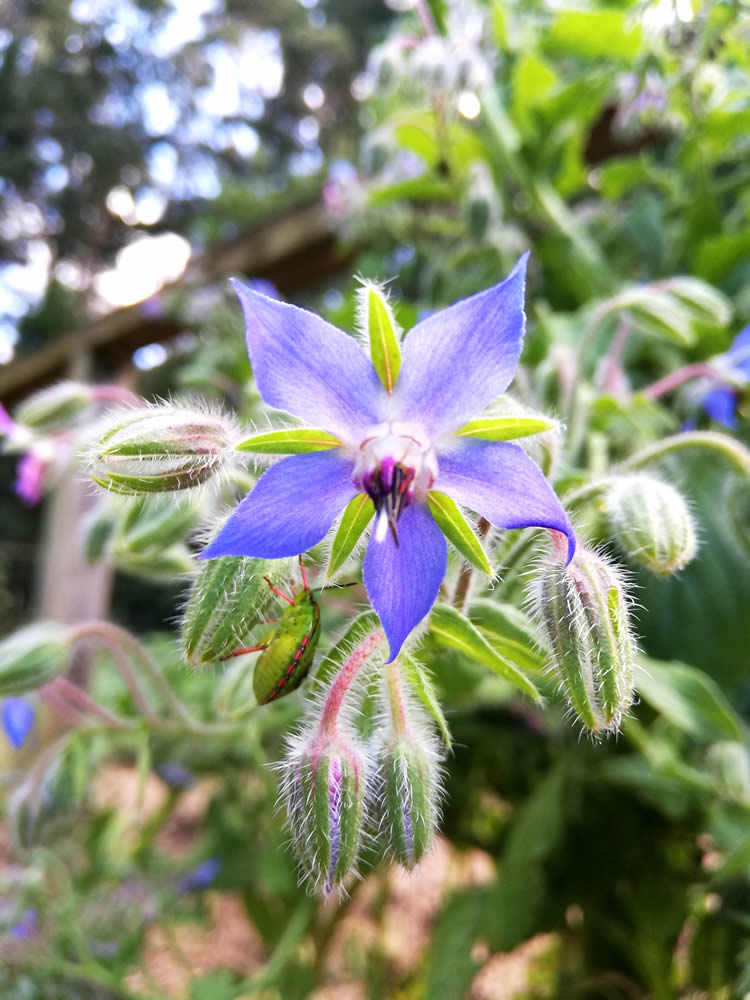
BORAGE EDIBLE FLOWERS –
Borage, also known as starflower, is popular culinary herb from the Middle Ages. It is now grown mostly for its bright blue flowers that bees love. Young leaves can be chopped and added to summer salads, or cooked like spinach. Use the flowers for desserts and cakes, as a garnish, or floated in summer drinks.
+ PARTS TO USE – leaves, flowers, stalks.
+ BOTANICAL NAME -Borago officinalis.
Buy NZ edible flowers: Boraage seeds >>
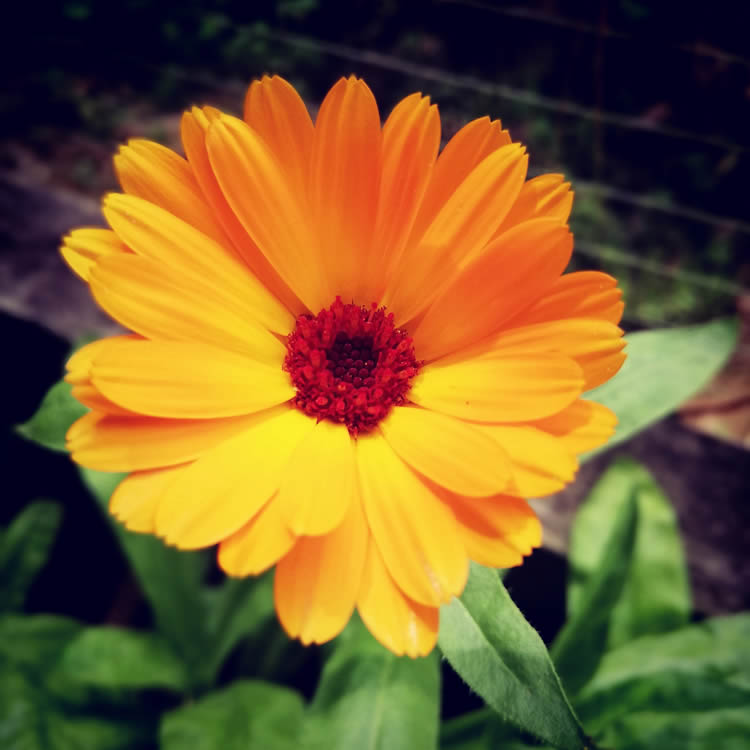
CALENDULA EDIBLE FLOWERS –
Calendula flowers have long been used for culinary, medicinal, and celebratory purposes. Highly regarded for ointments and tinctures. Calendula pairs well with savoury dishes and its bright orange petals offer a vibrant garnish for salads and baking. Oil infusion for natural skincare products. Teas blends.
+ PARTS TO USE – Flowerheads and petals.
+ BOTANICAL NAME – Calendula officinalis.
Buy NZ edible flowers: Calendula seeds >>
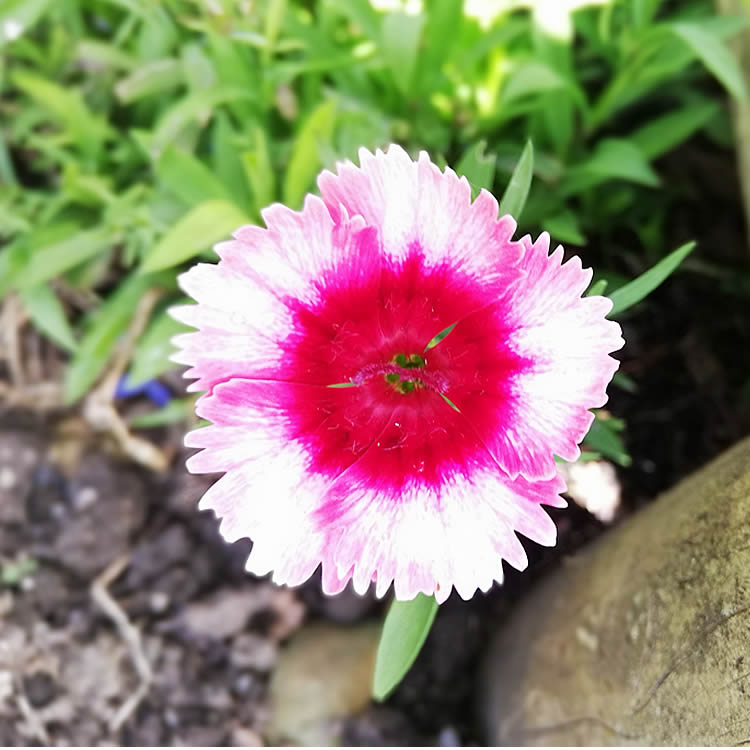
CARNATION EDIBLE FLOWERS –
Also commonly known as Pinks or Dianthus, these flowers come in a range of colours. Culinary use dates back to the 17th century, when monks used them alongside other ingredients to make Chatruse liquer. A beautiful garnish for baked goods and desserts, or add to salads. Try flavouring sugar, oils or vinegars.
+ PARTS TO USE – Petals, discard the bitter white base.
+ BOTANICAL NAME – Trifolium pratense
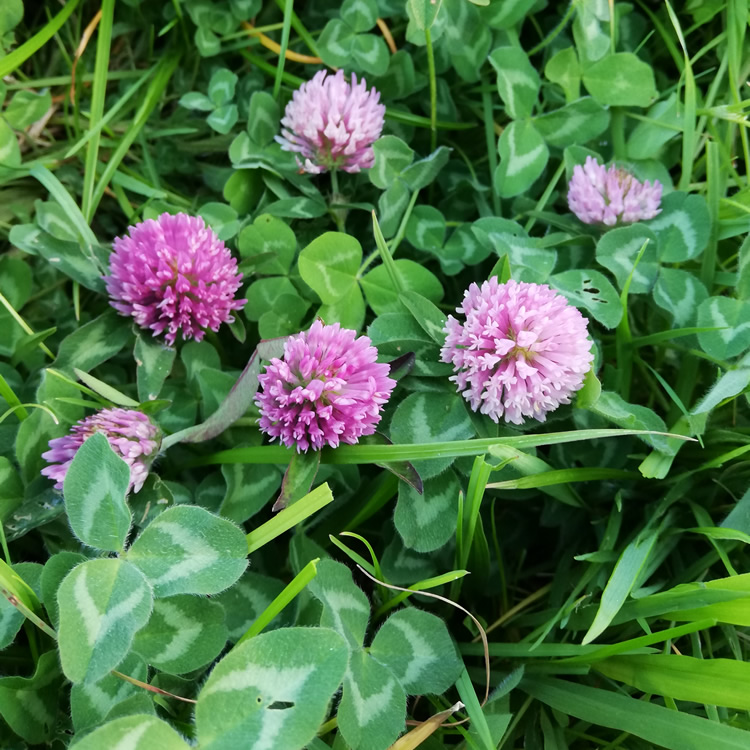
CLOVER EDIBLE FLOWERS –
Red Clover is a plant belonging to the same family as peas and beans. It has long been used for its medicinal properties, treating health conditions such as cough, skin complaints and menopausal symptoms. Flowers can be used for garnish in salads or sweet dishes. They are also a good addition in baking and look beautiful as a garnish. Make a tea. Sprouting seeds. Do not consume if pregnant or breastfeeding.
+ PARTS TO USE – leaves, flowers, seeds (sprouts)
+ BOTANICAL NAME – Trifolium pratense
Buy NZ edible flowers: Red Clover seeds >>
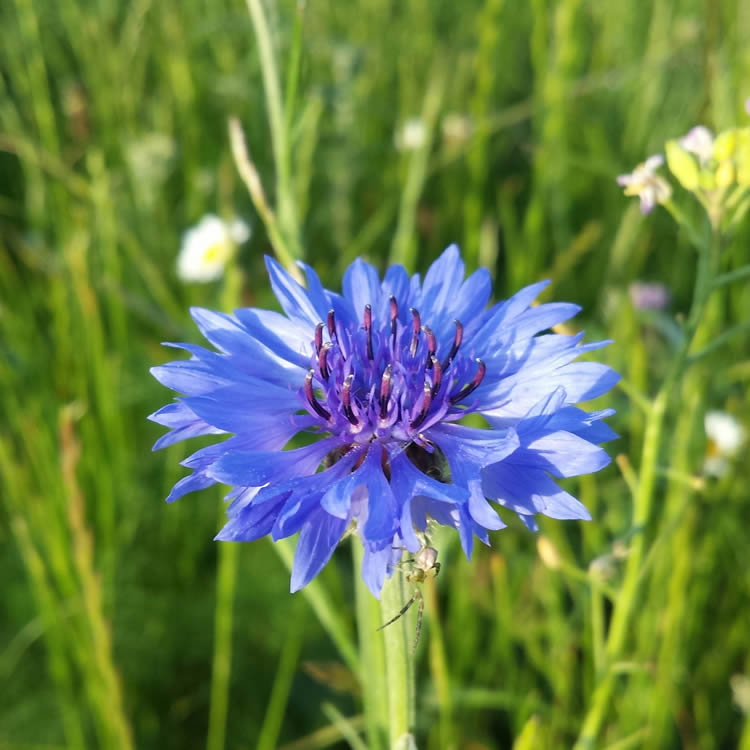
CORNFLOWER EDIBLE FLOWERS –
Cornflowers make excellent cut flowers and a beautiful garden addition, but its edible flowers make them a favourite among home cooks and chefs. Comes in a variety of colours ranging from blue, to pink, to purple / black. Goes well in all kinds of savoury and sweet dishes, makes a beautiful garnish when the petals are separated and sprinkled over desserts, baked goods, or cocktails.
+ PARTS TO USE– Flowers
+ BOTANICAL NAME – Centaurea cyanus
Buy NZ edible flowers: Cornflower seeds >>

COSMOS (orange) EDIBLE FLOWERS –
Cosmos flowers of the Yellow and Orange shades are edible (Cosmos sulphureus), though NOTE the Pink, Purple, Red and White flowers are NOT edible. Check the botanical name when purchasing plants or seed. Pollinators love the nectar on this prolific flowering plant. Try them in salads as garnishes, or float in summer cocktails.
+ PARTS TO USE – Flower, petals.
+ BOTANICAL NAME – Cosmos sulphureus
Buy NZ edible flowers: Cosmos seeds >>
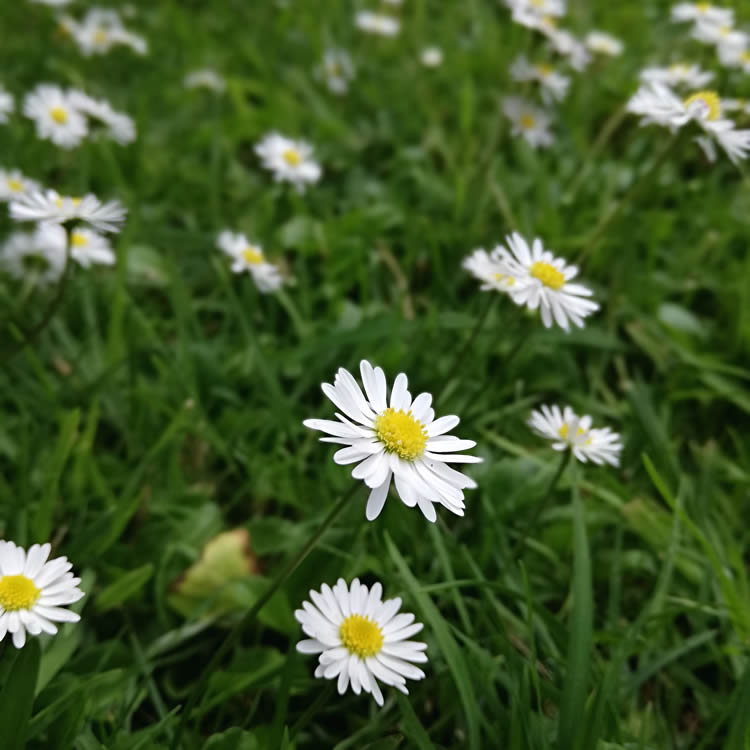
DAISY EDIBLE FLOWERS –
Common Daisy has been used for centuries to treat a number of ailments, include bruises, as reflected in it’s historical name Bruisewort. The whole plant is edible, but the flower heads are the most popular part for culinary purposes. Young leaves and flowers can be added to salads. Infuse them into schnapps, syrups and pickles. The buds can be preserved in vinegar and used in cooking as a substitute for capers. Infuse in oil for use on bruises.
+ PARTS TO USE – Flowers, leaves, buds
+ BOTANICAL NAME – Bellis perennis
Buy NZ edible flowers: Ox Eye Daisy seeds >>
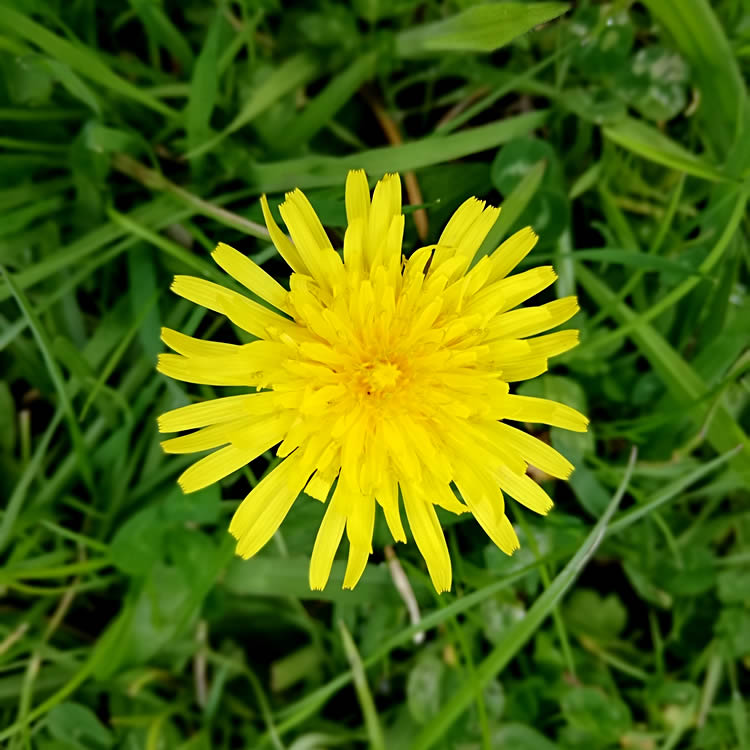
DANDELION EDIBLE FLOWERS –
Dandelion is one of the most common and recognisable weeds that grows profusely around the country, but did you know you can eat its flowers and leaves? In fact, dandelions are one of the most nutritious plants that have ever been tested. Flowers and leaves can be eaten in salads, and the leaves can be cooked like spinach. Flowers can be used to decorate baked goods.
+ PARTS TO USE – Petals + leaves mixed in salads, syrup, tea.
+ BOTANICAL NAME – Taraxacum officinale
Buy NZ edible flowers: Dandelion seeds >>
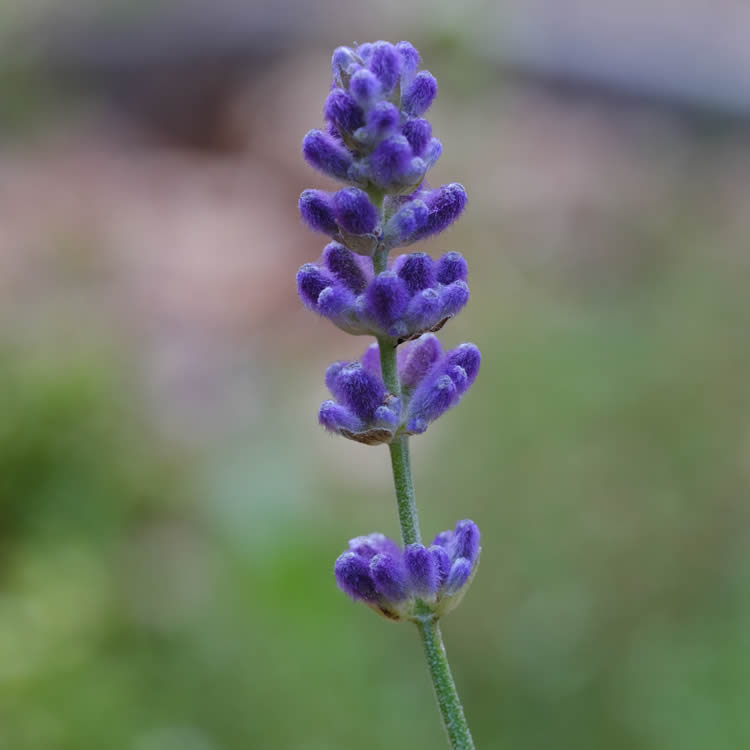
LAVENDER EDIBLE FLOWERS –
Most lavender is considered safe to eat in small amounts, but culinary lavender is usually English lavender (Lavandula angustifolia), which is the most commonly used species in cooking plants is much better for cooking as it has a lot less oil than the varieties used in perfumes or soaps. Use in sweet and savoury cooking: desserts, cookies, fragrant oils and, sugar and syrups. Mix with Provencal herbs and use for stuffings, or as a rub for chicken or cauliflower. Cosmetic use.
+ PARTS TO USE – Flowers
+ BOTANICAL NAME – Lavandula angustifolia
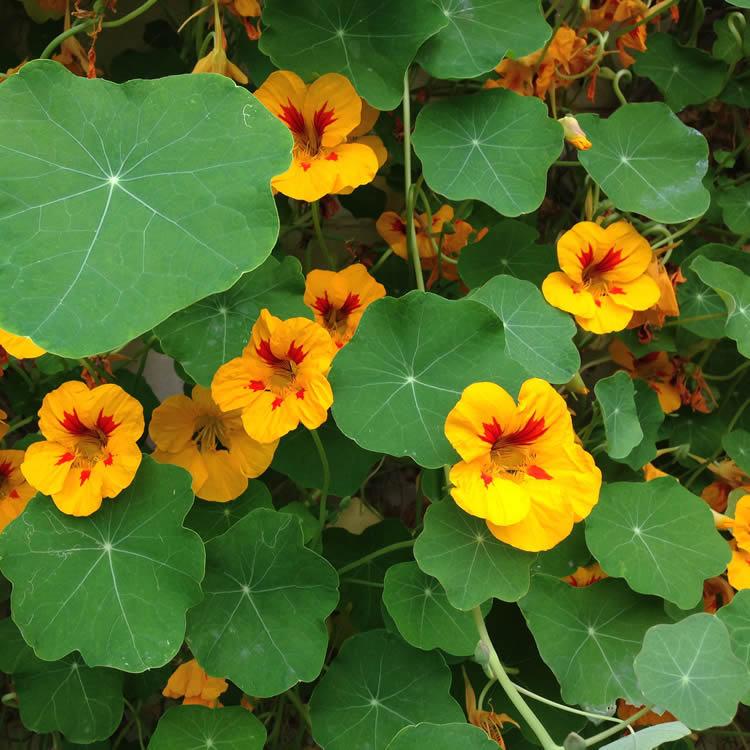
NASTURTIUM EDIBLE FLOWERS –
All parts of the nasturtium plant are edible and have a distinct peppery flavour, the leaves being stronger. High in Vitamin C. The tails on the flowers contain sweet nectar that my children love. Add flowers and leaves to salads, use them to decorate cakes, pickle nasturtium seeds.
+ PARTS TO USE – Whole flowers, petals, leaves, green seed pods.
+ BOTANICAL NAME – Tropaeolum majus
Buy NZ edible flowers: Nasturtium seeds >>
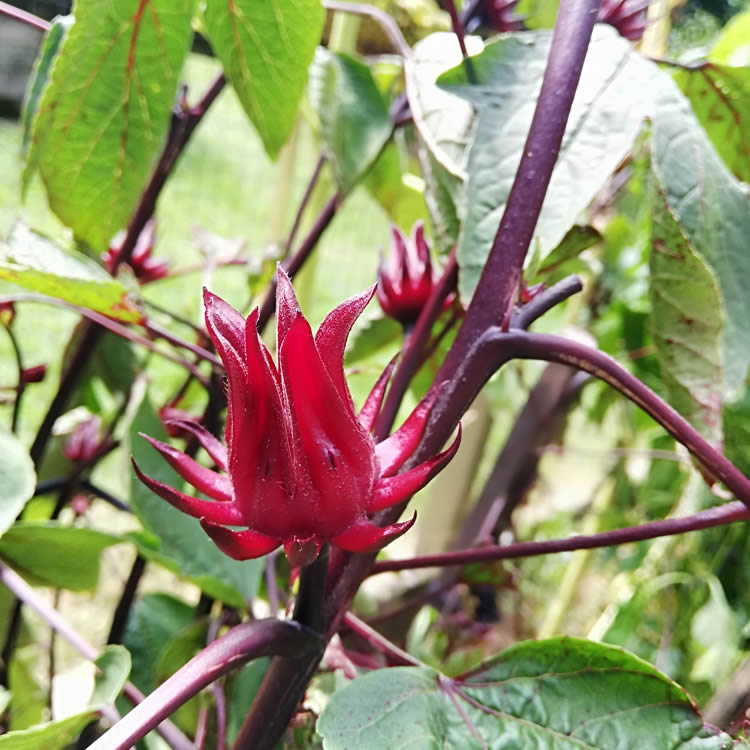
HIBISCUS EDIBLE FLOWERS-
Hibiscus plants produce beautiful ornamental edible flowers come is a range of colours and varieties and grow in tropical and subtropical climates. Although you can eat the flowers straight from the plant, you can also preserve and dry the flowers. Preserve in jams, tea, syrup, relishes, and salads or use as decorations on cakes.
+ PARTS TO USE – Flowers, leaves, buds
+ BOTANICAL NAME – Roselle or Hibiscus sabdariffa.
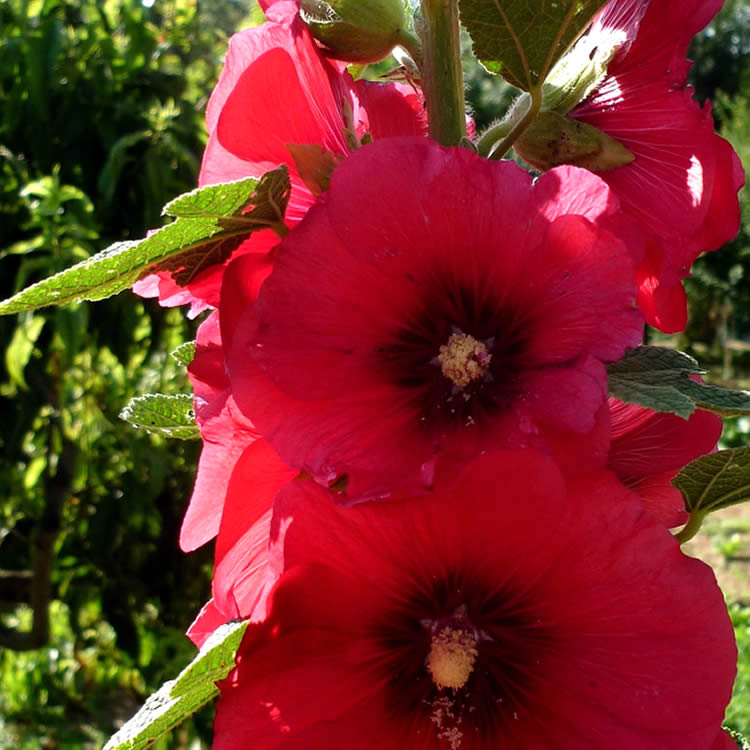
HOLLYHOCK EDIBLE FLOWERS –
Hollyhock generally flower the second year from sowing. They can grow 1-3metres tall, and flower up the length of the stem through summer. They are related to Marshmallow, are a delight to behold in the garden and the bees love them too! Flowers can be crystallised or pressed and used on cakes, mix them with salads, or make a syrup for coughs.
+ PARTS TO USE – Petals from newly opened flowers, remove pollen parts. The leaves and roots are edible too.
+ BOTANICAL NAME – Alcea rosea
Buy NZ edible flowers: Hollyhock seeds >>
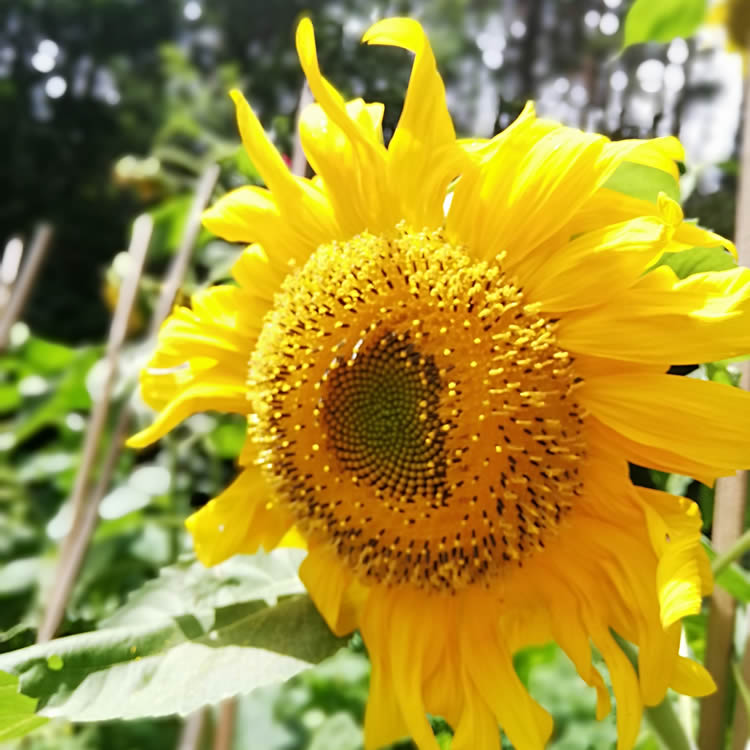
SUNFLOWER EDIBLE FLOWERS –
Sunflowers are not only beautiful, but the entire plant is edible from root to petals, even the stalk. Loved by bees and great for the compost once woody, the sunflower is an essential addition to the garden. Beware of fungicide treated seed, choose organic where able! Buds can be cooked and eaten like artichokes; stalks can be eaten like celery; leaves can be added to salads or used like spinach; petals as a garnish, roast seeds or eat raw.
+ PARTS TO USE – Flowers, leaves, seeds, stalks.
+ BOTANICAL NAME – Helianthus annus
Buy NZ edible flowers: Sunflower seeds >>
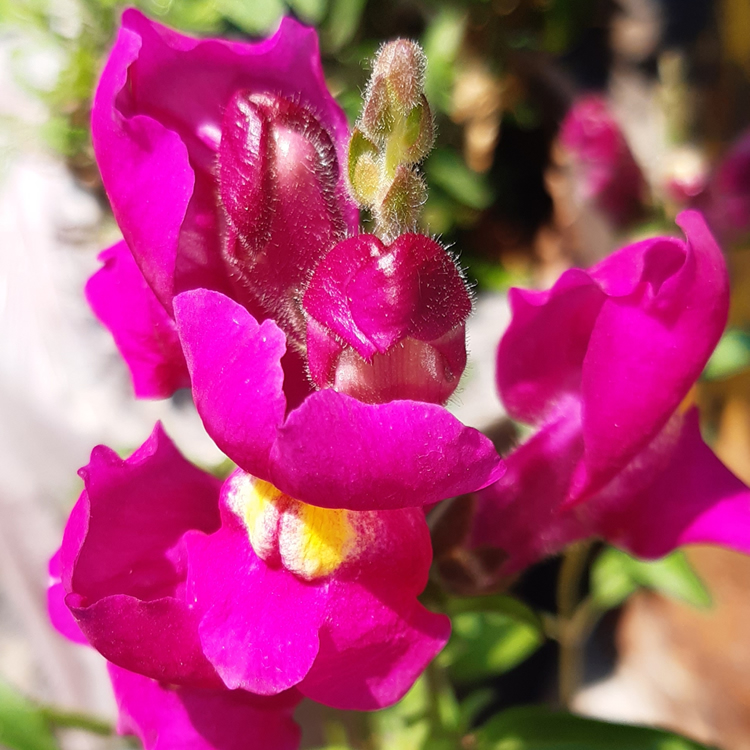
SNAP DRAGON EDIBLE FLOWERS –
Many people are fond of this old-fashioned cottage garden flower, but aren’t aware that snapdragon flowers are edible, mostly because of their bitter flavour. The florets taste best when young. Use as a garnish for platters, add flowers to decorate baking and deserts, freeze in ice cubes, or snap onto the rim of a cocktail glass.
+ PARTS TO USE – Flowers.
+ BOTANICAL NAME – Antirrhinum majus
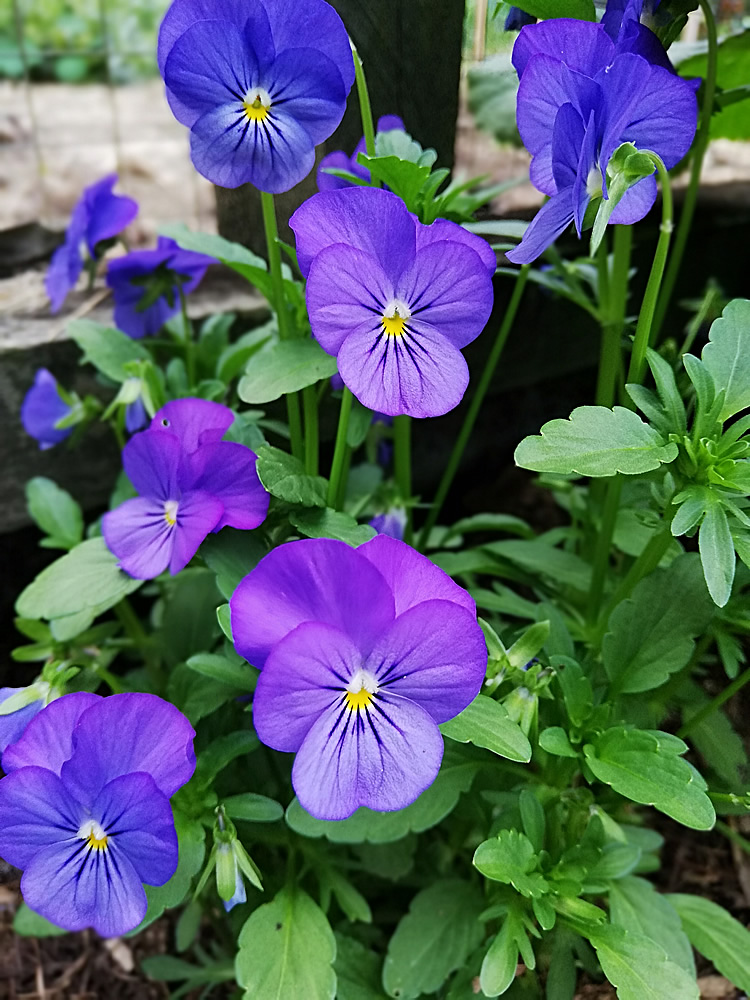
VIOLAS & PANSIES EDIBLE FLOWERS –
Violas are a beautiful edible flower and make a stunning addition to salads or desserts. Pansies are often mistaken for violas as they look very similar, but pansies are slightly larger, and the centre of the flower is usually darker than violas. Pansies and Violas can both be eaten but note that not all viola are edible always check the botanical name when planting seeds. Viola and Pansies make a colourful addition to salads, crystallise, decorate baking or desserts, freeze in ice cubes for cocktails, or float in punch.
+ PARTS TO USE – flowers and leaves.
+ BOTANICAL NAME – Viola cornuta
Buy NZ edible flowers: Viola seeds >>
Other edible flowers
I have left out of this list, the edible flowers that fall into the category of herb, vegetable, shrub, or ornamental, and focused on the ‘cottage garden’ flowers, that are grown from seed.
Other flowers you can research include:
- Chives
- Rosemary
- Sage
- Pineapple Sage
- Elderflower,
- Camellia
- Magnolia
- Zuchinni
- Broccoli
- Rocket
- Fushia
- Day-lily
- Violet
- Rose
- Forget-me-nots
- Begonia
- Chrysanthemum
- Geranium
- Oxeye Daisy
- Onion Weed
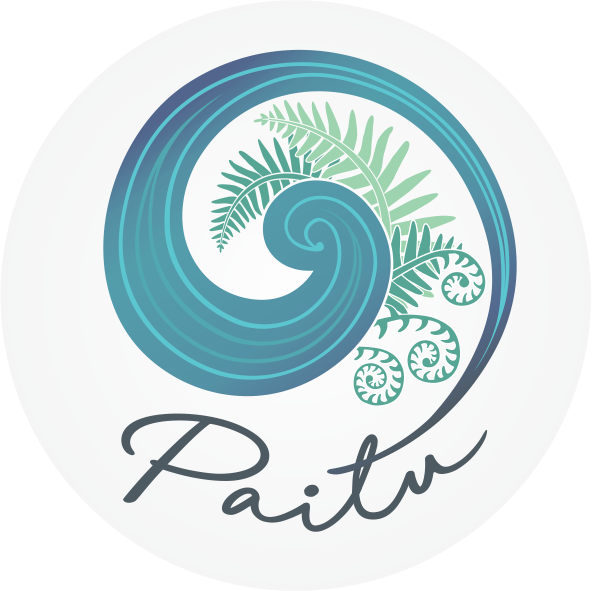
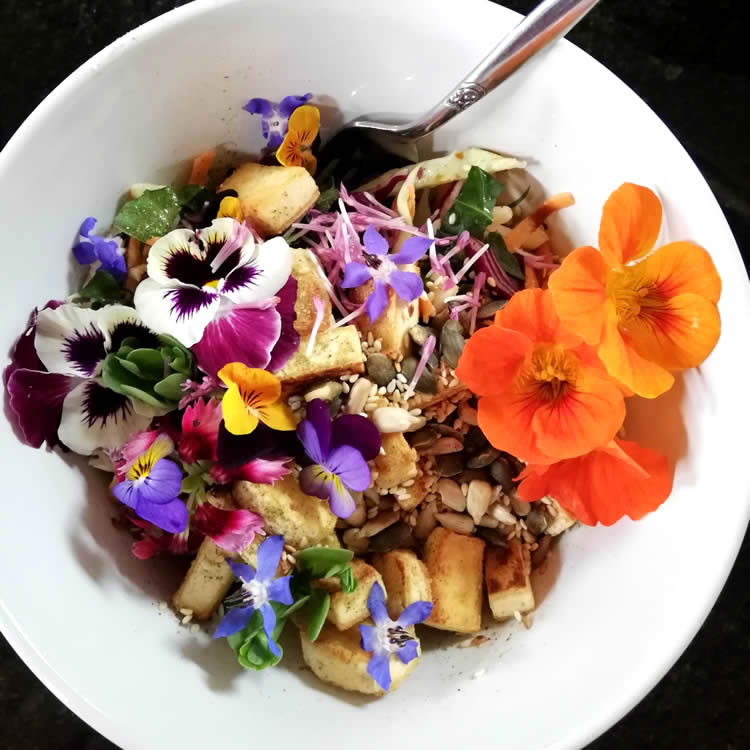
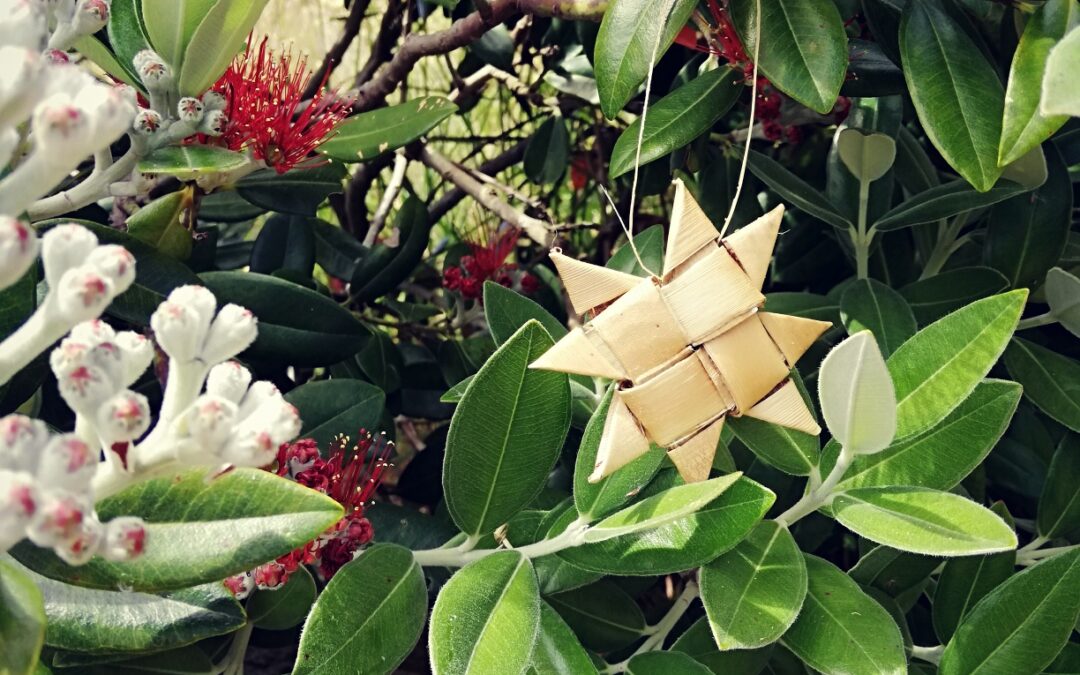
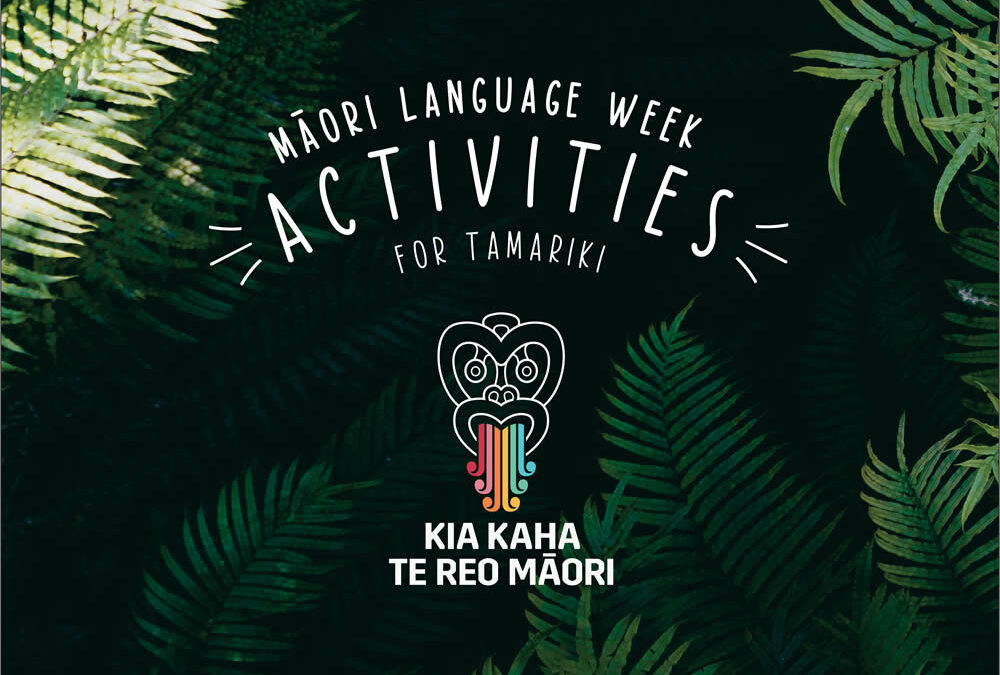
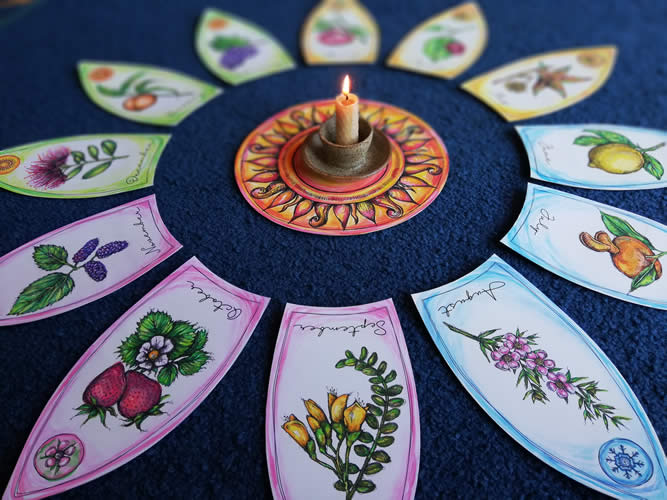

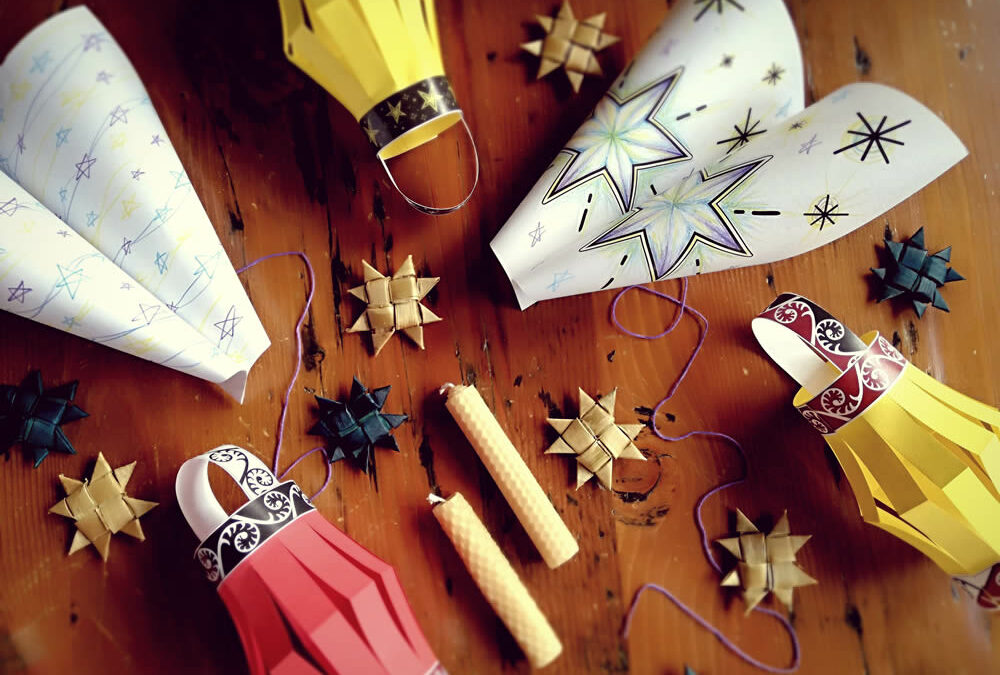
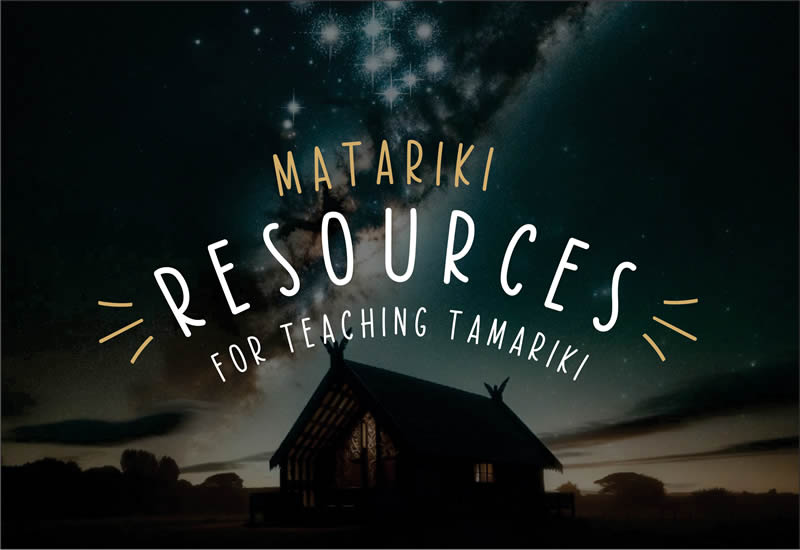
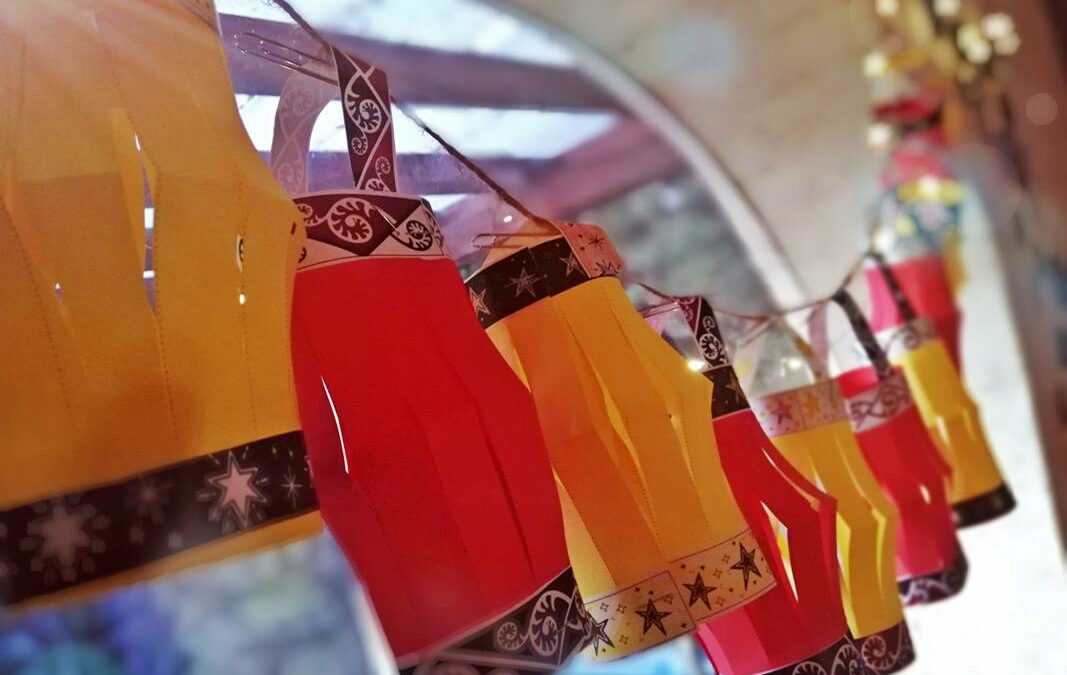
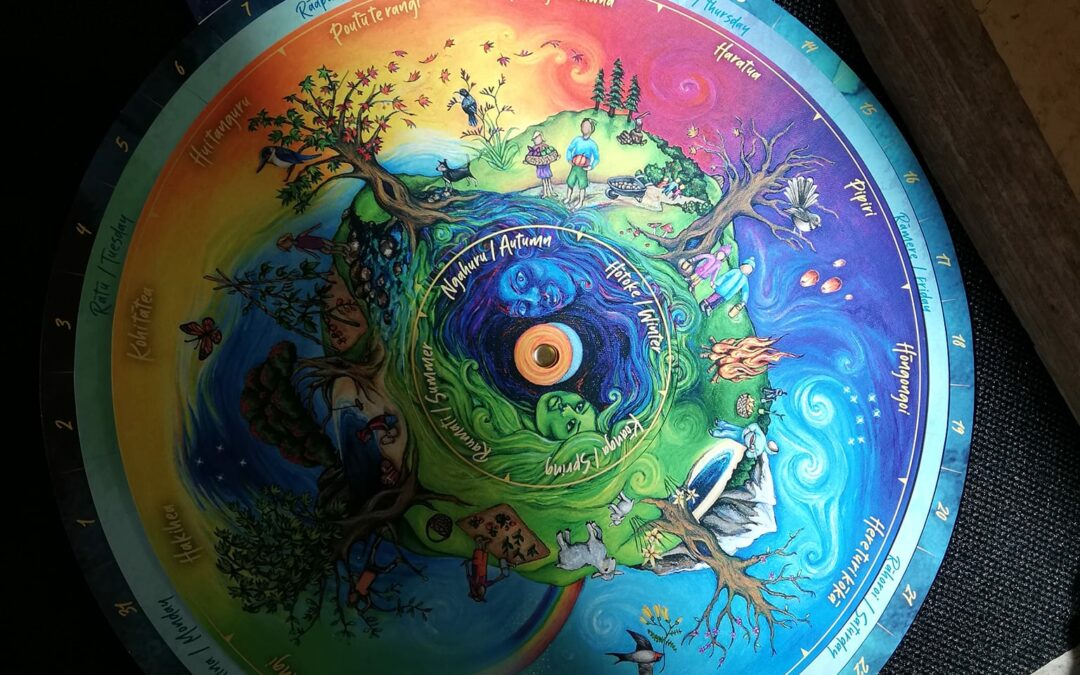
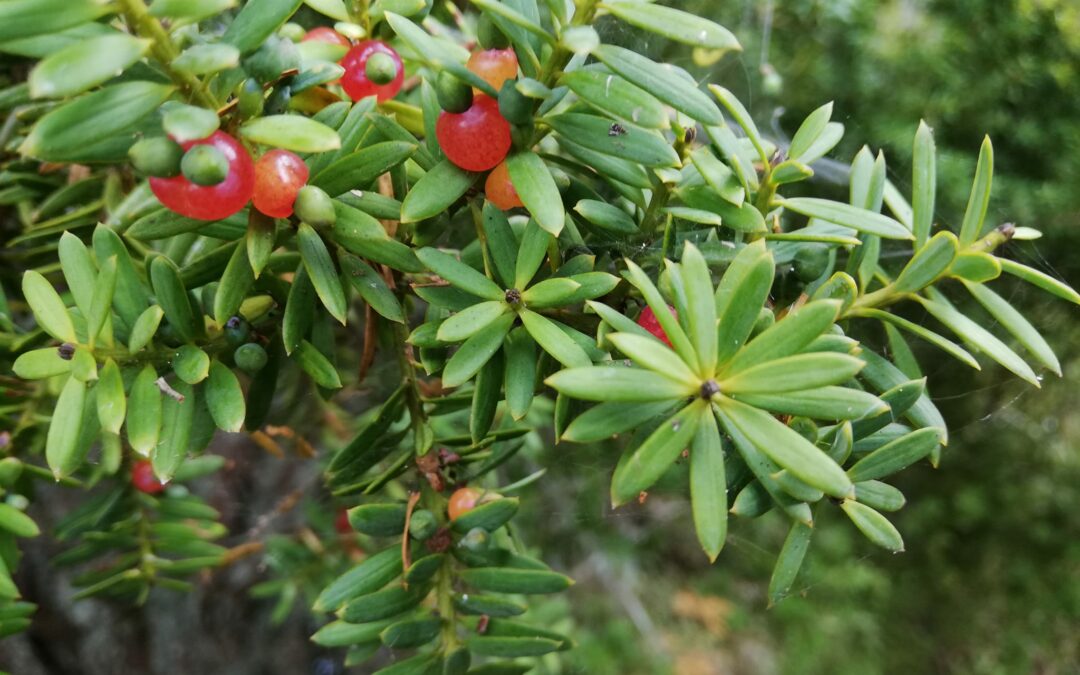
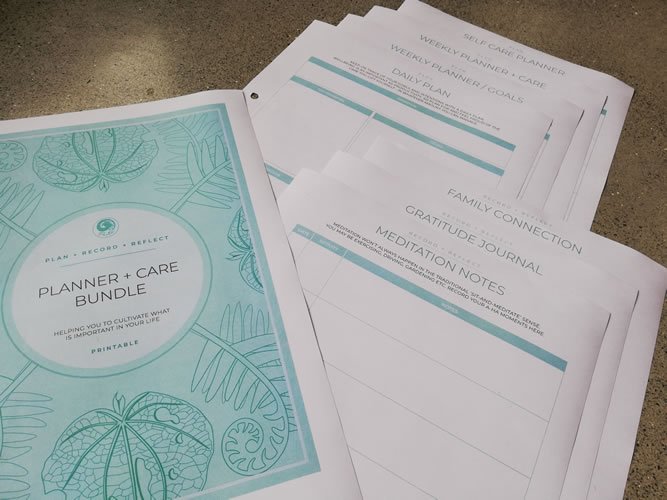
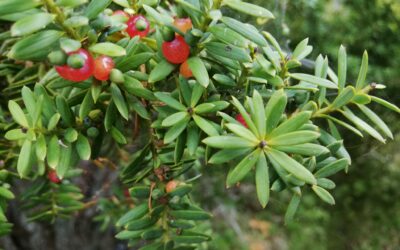

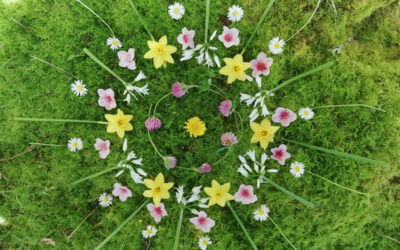
0 Comments